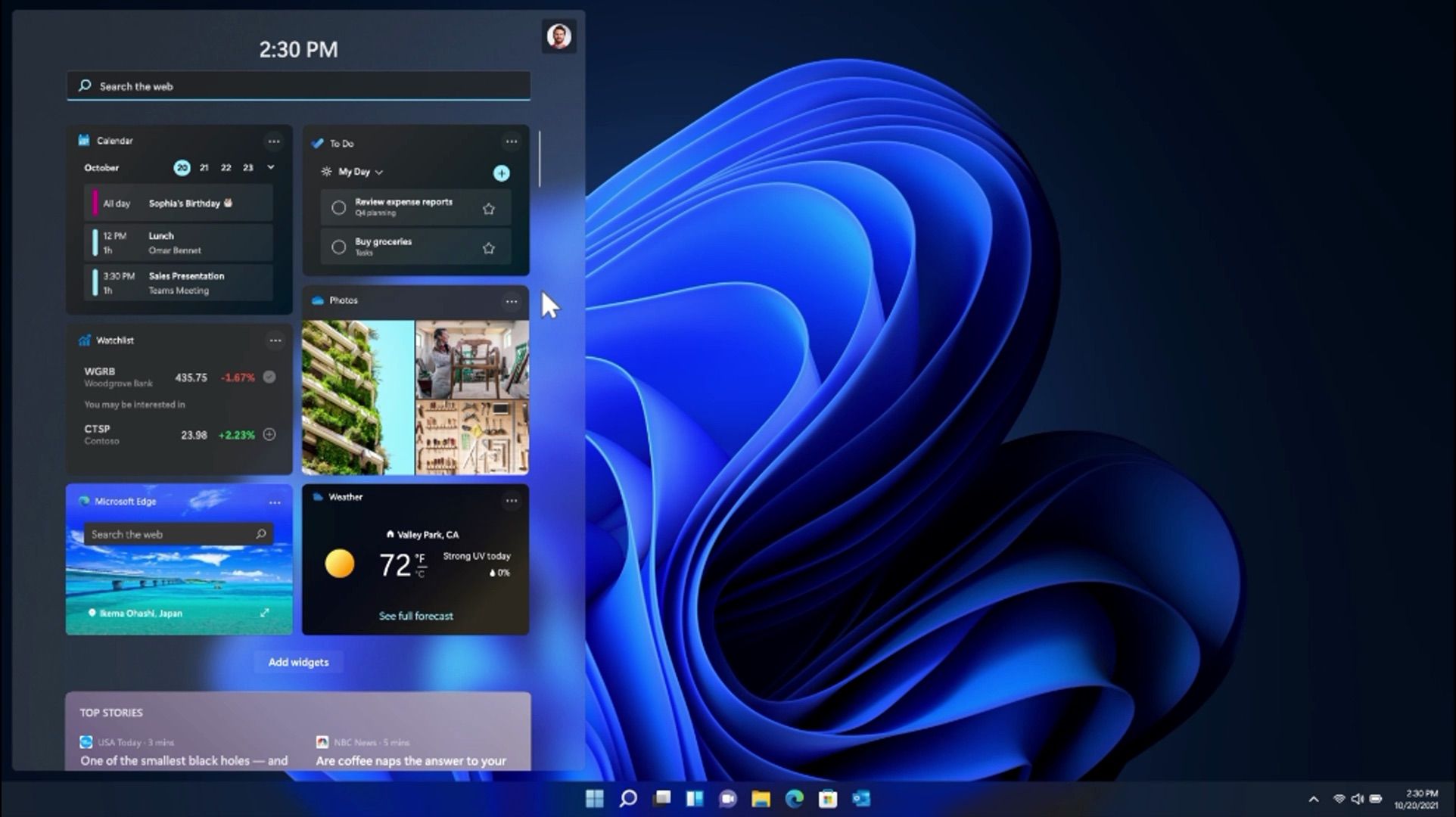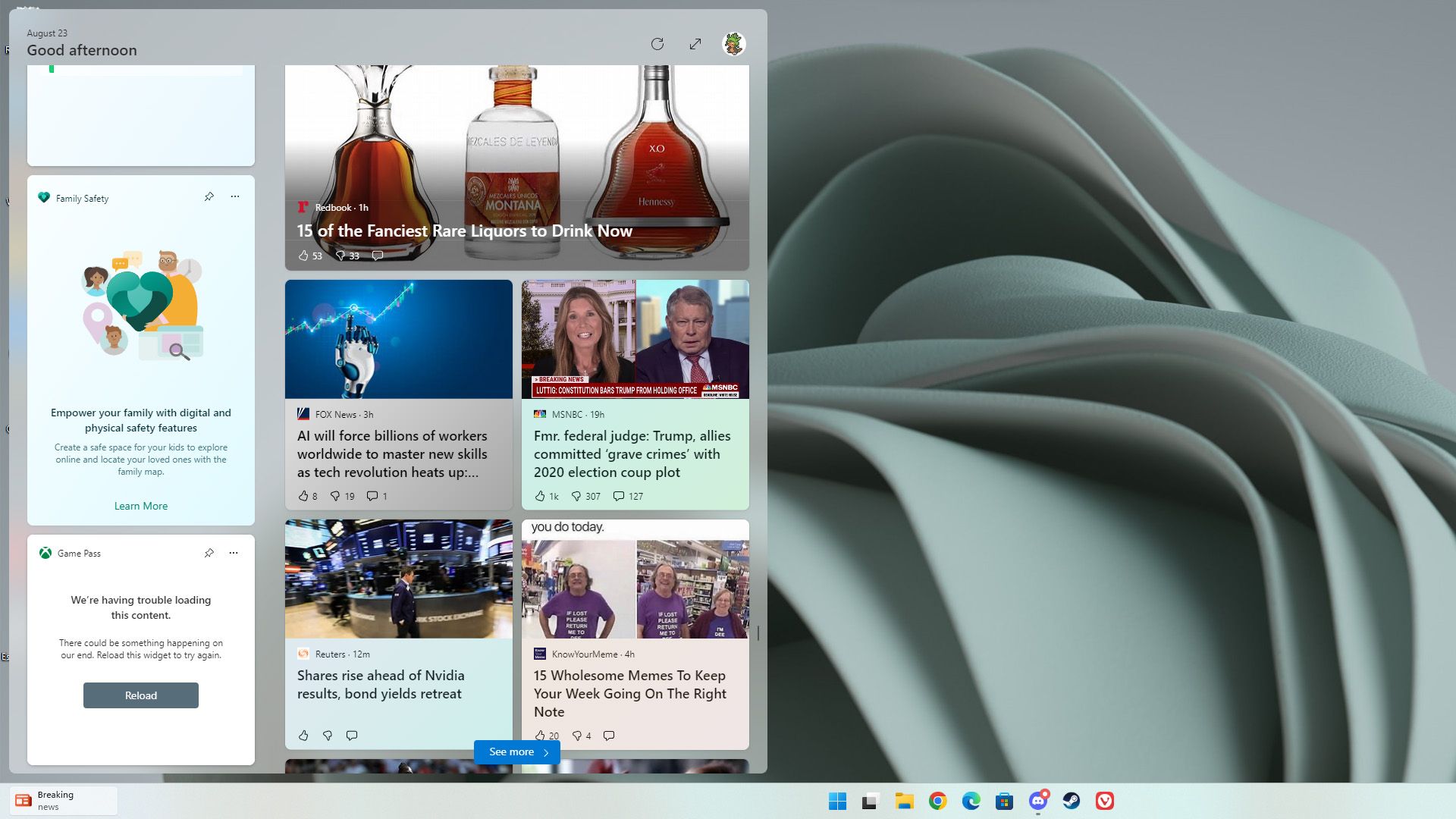Key Takeaways
- Microsoft has reintroduced widgets in Windows 11, but instead of providing useful information, they have transformed into a platform for promoted content that users don't want.
- Widgets have a history in Microsoft's operating systems, such as Active Desktop and Desktop Gadgets, but they were eventually discontinued or replaced due to various reasons.
- The new widget panel in Windows 11 focuses heavily on promoting MSN content, with only a third of the space dedicated to actual widgets. This shift in focus makes widgets less useful and may discourage third-party developers from creating their own widgets.
Microsoft brought widgets back with the release of Windows 11 in 2021, and the company has continued to change their behavior and options since then. There are now more widgets available (including some ones not made by Microsoft), and the widget board is larger, which should make them just as useful as widgets on iPhone or Android. Instead, Microsoft has turned widgets into yet another avenue for promoted content that no one wants, pushing useful features to the side.
This is far from the first time Microsoft has experimented with widgets or similar functionality. Active Desktop on Windows 95, 98, ME, and XP allowed Internet Explorer to display HTML content on the desktop, either taking up the entire background or limited to resizable panels. That was eventually discontinued and replaced with Desktop Gadgets, which first appeared in Windows Vista.
You could place clocks, weather information, a calendar, web search, and other useful information panels and shortcuts anywhere on your desktop. However, they were dropped in Windows 8, possibly because live tiles served a similar purpose. Microsoft fully disabled gadgets on Windows Vista and 7 in 2012 due to a remote code execution flaw. Windows 11 marked the return of widgets, but in a more constrained fashion.
Instead of living on the desktop, widgets are limited a special panel, accessible by clicking the new widgets button in the taskbar. The initial release of Windows 11 included widgets for weather, stocks, calendar, your to-do items, photos, sports, news, local traffic, and other information.
Over the past two years, Microsoft has made the widget panel larger, added more widgets, turned the widget button into a weather and news panel, and most importantly, opened up widgets to third-party developers. We still haven't seen many Windows applications or web apps implement Windows 11 widgets, but the finalized documentation has only been available for a few months, so that's not too unusual.
From the start of Windows 11, Microsoft used the widget board to promote content from MSN, just like you see in Microsoft Edge. It started off with just news and sports widgets, which were easy enough to remove if you didn't want to see that. Microsoft experimented with a few different layout changes, until settling on a new two-panel design in March 2023, which now seems to be rolled out to most Windows 11 PCs.
The new widget panel isn't really about widgets anymore. In fact, widgets now only take up a third of the available space, with the remaining two-thirds taken up by "My feed." The feed is just a list of cards with news stories Microsoft thinks you might care about. However, at least in my experience, it's mostly junk.
Just like with the default new tab page in Microsoft Edge, there's a lot of random celebrity gossip, a lot of clickbait, and articles from sources proven to be unreliable. Even worse, some stories in the widgets panel are auto-playing videos, the weather panel in the bottom occasionally turns into a "breaking news" message with an unread indicator, and all feed items open in Microsoft Edge even if you have another app set as your default browser.
The focus on promoted content has made widgets far less useful, and will probably discourage third-party developers from creating widgets — the main aspect that makes widgets helpful on Android, iPhone, and iPad.
What's the point in creating a companion widget for your service or app when it will just be pushed to the side in favor of whatever junk articles and videos Microsoft thinks is worth promoting? It doesn't help that overall adoption of Windows 11 has been slow, at around 24% of all Windows PCs.
The widget panel in Windows 11 has turned from a promising idea into one of the worst aspects of Windows 11. Microsoft needs to rethink how much of its operating system should be a billboard for MSN and Bing, or it could continue losing ground to Apple.





0 Comments